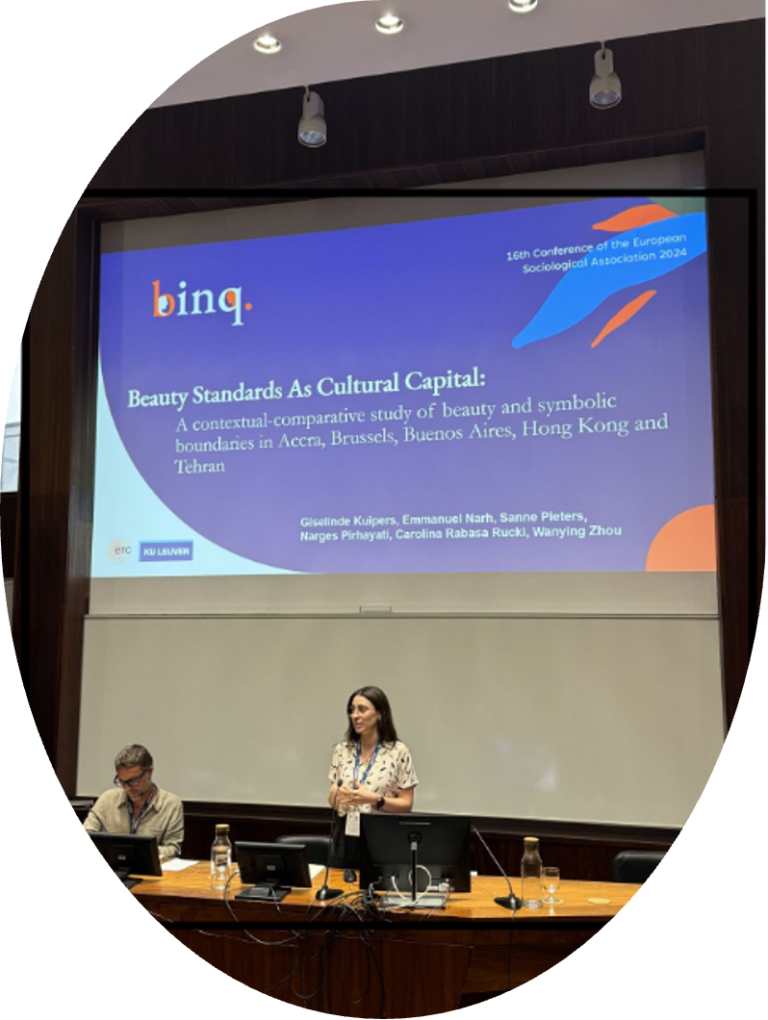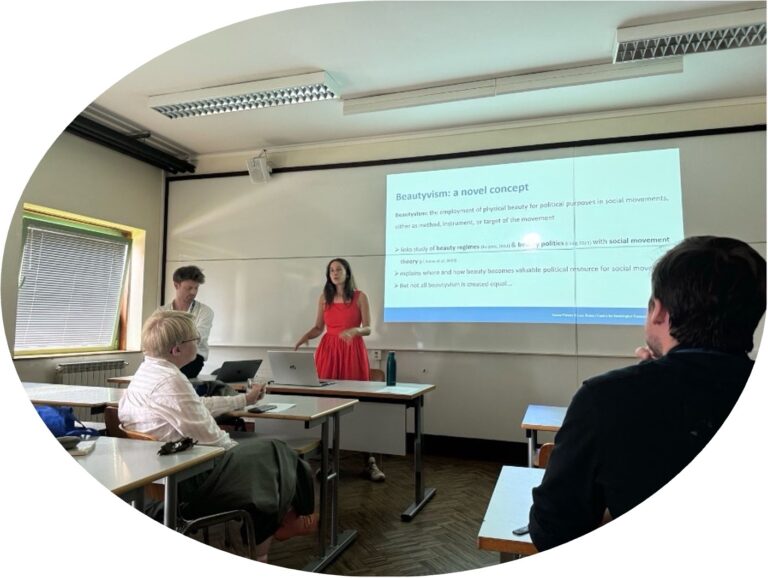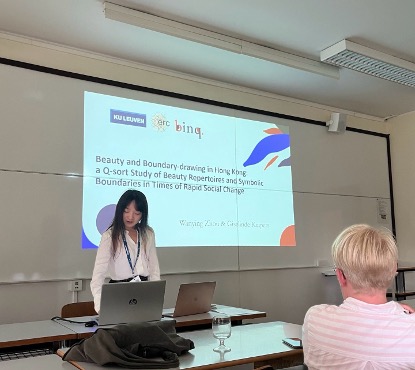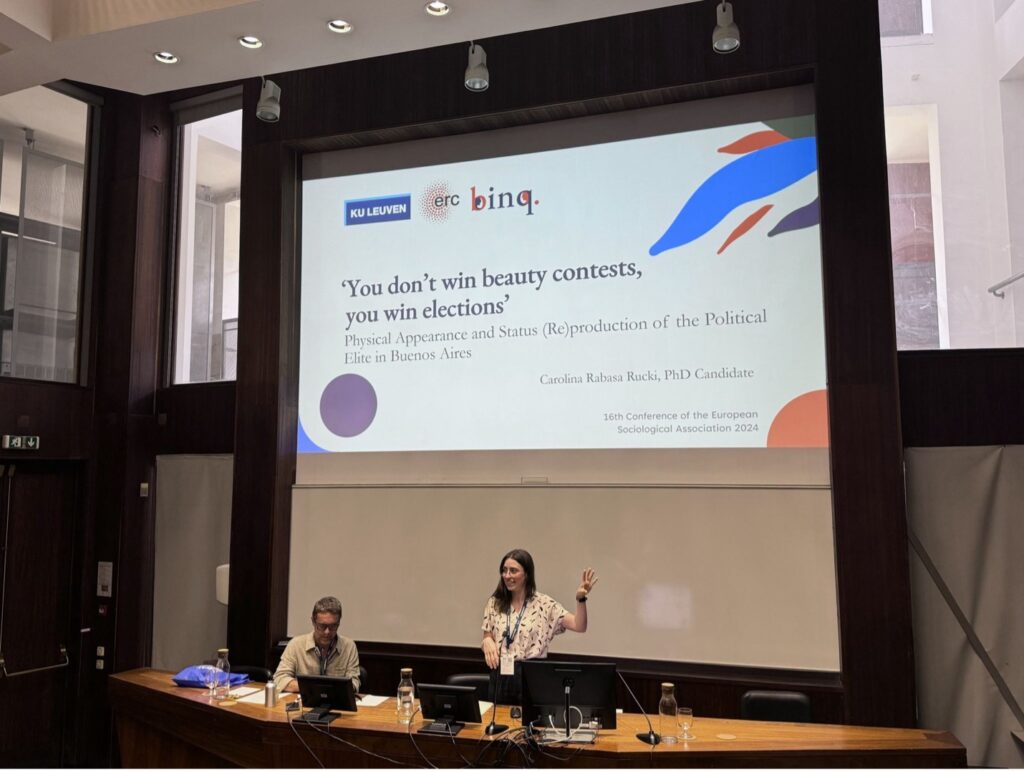ESA Conference Porto: Beauty Standards as Cultural Capital

During the European Sociological Association (ESA) Conference 2024 in Porto, Portugal, Carolina represented the BINQ team and shared the first city-based results of the shared project on beauty standards as cultural capital across five global cities: Accra, Brussels, Buenos Aires, Hong Kong, and Tehran. This comparative study delves into how symbolic boundaries around beauty may take part in shaping social inequality.
It was an incredible experience to engage with fellow sociologists on the significance of appearance in diverse contexts. Looking forward to future collaborations and discussions on these important topics.

ESA Conference Porto: Beautyvism

by Luuc Brans & Sanne Pieters
How can we think in sociological terms about different political struggles over beauty?
During the ESA Conference in Porto, Luuc Brans and Sanne Pieters introduced the concept of beautyvism to study how beauty is politicized in different social movements. Beautyvism is a type of beauty politics in which physical beauty is used for political purposes in social movements, either as a method, a tool or a goal in itself.
Using conceptual tools of social movement theory, Brans and Pieters drew on three case studies of beautyvist movements to develop their typology of beautyvism: the Anti-Miss America protests, the Fat Acceptance movement and the Tradwives movement. They demonstrated that beautyvist movements are serving a variety of (anti-)feminist ideological projects that can be emancipatory, revolutionary or reactionary.
Want to learn more? The full chapter “Beautyvism: beauty as a political tool” will soon be available in the Handbook of Beauty and Inequality (G. Kuipers, O. Sarpila (Eds.), Springer). Keep an eye on this page for updates!
ESA Porto: Presentation on Q-sort Study of Beauty Repertoires and Symbolic Boundaries in Times of Rapid Social Change in Hong Kong

by Wanying Zhou
In August 2024, upon finishing her first period of fieldwork in Hong Kong, Wanying presented her initial findings of the Q-sort case study at European Sociological Association conference in Porto.
Having interviewed 40 people of different age, education background, gender and origin of birth, she showcased some results by factor analysis, to compare the changing taste of mainland repertoires vs Hong Kong repertoires. Symbolic boundary drawing was also preliminarily manifested by participant’s social network, in the way that friends or couples show similar taste in Q result. The presentation was discussed by several beauty scholars from other regions on site. It was both an insightful experience for our group research and a very good opportunity to exchange and disseminate new ideas!


ESA Conference Porto; ‘You don’t win beauty contests, you win elections’

by Carolina Rabasa Ruck
During the European Sociological Association (ESA) Conference 2024 in Porto, Portugal, Carolina shared insights from her project, which explores how physical appearance plays a role in the (re)production of political elites in Buenos Aires, offering a unique lens on the intersection of status and image in politics.
Through this instance, data collection experiences were shared. As well, preliminary findings were introduced, pointing out two styles of appearance that will be developed in an upcoming academic publication. Stay tuned for the published results!
BSA Conference 2025: Sanne Pieters on the Symbolic Power of Natural Beauty

In April 2025, I attended the British Sociological Association conference in Manchester to present her ongoing research on the symbolic power of “natural beauty” in the field of aesthetic medicine. I did not set out to study “natural beauty” from the beginning of my PhD, but the concept proved quite compelling: it kept showing up in interviews with aesthetic practitioners and observations during client-patient consultations and plastic surgery conferences.
To me, this importance seemed contradictory at first (aren’t natural beauty and aesthetic interventions sort of contradictory?) but I quickly realised that this specific beauty ideal came with significant symbolic power.
While it was often hard for practitioners to put into words what “natural beauty” means, we find that interpretations of what it looks or should look like are produced by and reproduce social hierarchies. We also find that the superiority of “natural beauty” over other beauty tastes is upheld by pedagogical practices & efforts where colleagues and client-patients with diverging beauty tastes are socialised and disciplined into the logic of the field.

